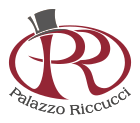Celebrate Easter like an Italian in Le Marche
Dear, traveler: Thank you for reading the first of what will be many editions of our newsletter. Simply, put—we wish to share the beauty of our home with you. We trust the forthcoming stories about out hotel—and Montappone herself—will inspire you to no end.
Easter is Italy’s biggest holiday that is not called Christmas. Every year, families in Le Marche will unite to celebrate the rebirth of Christ by enjoying multi-course lunches together, though not before eating breakfasts consisting of “Crescia di Pasta al Formaggio,” a delectable egg and cheese-based bread normally paired with “salame” (seasoned and cured slices of pork).
Raw reenactments of Christ’s death and resurrection are an Easter tradition in the villages that dot Le Marche’s hills. And while versions of the famous crucifixion take place across Le Marche, the village of Cantiano hosts the most elaborate of all; An open play depicting Christ’s demise is put on every Good Friday in the town’s theatre where crowds alway amass, and the festivities culminate in the evening with a solemn procession of Roman drums as three crosses become lit atop Mount Ubaldo.
As any epicure knows, pasta is a staple of Italian cooking, and our famous Easter lunch makes no exception for this. This April 21 at 1:00 p.m. we’ll be serving a feast featuring our fresh, handmade Tortelli that’s stuffed with a meat medley, plus a divine lamb dish whose recipe is a secret (you understand). Fact: There is a unique element in the pastas from our region that make them lighter and more digestible than typically like fare; It’s called “Jervicella” (YER-vee-che-la), an ancient form of wheat that has been cultivated in the south of Le Marche for centuries. We plant our own “jerva” every autumn to yield a bountiful summer harvest. Once its ground by a local mill, jervicella becomes flour, and thus, the base of many kinds of pastas made at our hotel (and around Le Marche). The straw produced by Jervicella was also used by milliners to make several styles of hats here during medieval times, which birthed Montappone’s reputation as the hat capital of the world.

